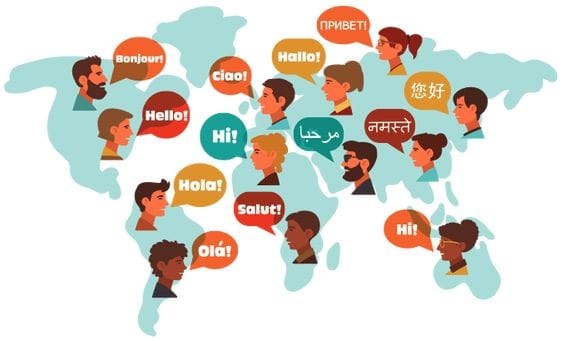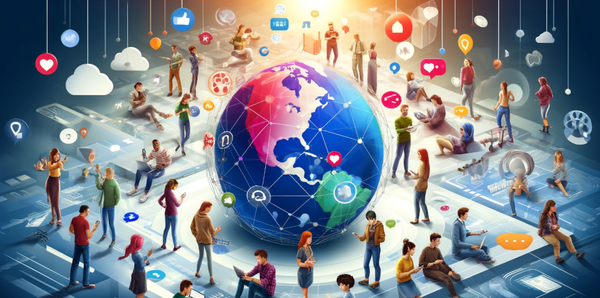Breaking Language Barriers: How Shared Media Transcends Borders

In our increasingly connected yet divided world, the ability to communicate across linguistic and cultural boundaries has never been more vital. While language has traditionally served as both bridge and barrier between communities, shared media—from journals and diaries to films and music—offers an alternative pathway to mutual understanding that transcends mere words. This phenomenon deserves deeper exploration, particularly as digital platforms revolutionise how we share our stories globally.
The Universal Language of Human Experience
At its core, media sharing speaks to something fundamentally human: our need to be understood. Whether through carefully crafted journal entries, photographs capturing fleeting moments, or music that resonates with our emotional state, we continually seek ways to express our internal landscape. When shared with others, these expressions form connections that often circumvent linguistic barriers entirely.
The journal entry written by a student in Tokyo, when shared online, might deeply resonate with a reader in London despite neither speaking the other's native tongue. The emotional authenticity captured in personal reflection creates bridges where formal language might falter. This universality of human experience—love, loss, hope, fear—provides a foundation for connection that requires no translation.
Journalling: From Private Reflection to Global Connection
Journalling has traditionally been considered a private practice—a conversation with oneself. However, the digital transformation of this ancient practice has repositioned it as a powerful tool for cross-cultural communication. When we document our daily lives, challenges, and triumphs in journals that can be shared globally, we contribute to a tapestry of human experience that helps others see beyond stereotypes and assumptions about different cultures.
Research suggests that journalling offers substantial psychological benefits for the writer, including reduced anxiety, improved emotional regulation, and enhanced self-awareness. When these benefits are coupled with the connection fostered through sharing these reflections, the practice takes on additional dimensions of cultural exchange and mutual understanding.
Dr Sarah Wilson's groundbreaking book, "The Written Bridge: How Journalling Connects Cultures in Digital Spaces" (2023), explores precisely this phenomenon. Her research documents how shared journalling practices between communities in conflict zones helped develop empathy and understanding where diplomatic efforts had repeatedly failed. Wilson's work demonstrates that the vulnerability displayed in authentic journalling creates pathways to connection that formal communication often cannot achieve.
Digital Platforms: Democratising Media Sharing
The democratisation of media creation and distribution has fundamentally altered how we communicate across borders. Platforms dedicated to journal sharing, photo essays, and multilingual content have emerged as spaces where translation becomes secondary to shared humanity. These digital environments allow individuals to share their lived experiences without the mediation of traditional gatekeepers who might otherwise determine which voices deserve amplification.
For communities historically marginalised in international discourse, these platforms offer unprecedented opportunities to control their own narratives. A journal entry shared by an indigenous activist in Bolivia might reach sympathetic readers worldwide without filtration through Western media perspectives. This direct connection circumvents traditional power dynamics in global communication.
Building Cultural Bridges Through Consistent Sharing
The podcast "Global Diary," hosted by cultural anthropologist Maya Rodriguez, offers profound insights into how consistent sharing builds lasting connections across cultural divides. In their particularly moving episode "The Ramallah-Tel Aviv Journal Exchange," Rodriguez documents how Palestinian and Israeli participants developed genuine understanding through a year-long journal exchange programme. Despite political tensions, participants found common ground in shared experiences of parenthood, career challenges, and everyday joys.
Rodriguez's work emphasises that regularity matters in cross-cultural sharing. One-off exchanges may provide momentary connection, but sustained sharing—watching someone's life unfold through their journal entries over months or years—creates deeper empathy and understanding. This longitudinal approach to cultural exchange allows participants to move beyond surface-level differences toward recognition of our common humanity.
Ethical Considerations in Cross-Cultural Sharing
While shared media offers tremendous potential for breaking down language barriers, ethical considerations remain important. Cultural appropriation, misrepresentation, and power imbalances can undermine genuine connection. Platforms facilitating cross-cultural sharing must consider how to balance accessibility with appropriate context.
Best practices include:
- Providing optional translation while preserving original language
- Encouraging contextual notes that explain cultural specifics
- Creating communication channels for clarification questions
- Establishing community guidelines that promote respectful engagement
When these guidelines are thoughtfully implemented, shared media can genuinely transcend borders rather than replicating existing inequalities in new digital spaces.
Digital Fluency as the New Multilingualism
As shared media platforms evolve, a new form of literacy is emerging—one that values emotional intelligence and cultural sensitivity alongside traditional language skills. This digital fluency involves understanding how different cultures express themselves through various media forms and developing the capacity to "read" personal narratives across cultural contexts.
Educational institutions increasingly recognise the importance of this competency, incorporating media sharing projects into language acquisition curricula. Students learning Japanese might, for example, participate in journal exchanges with peers in Tokyo rather than focusing exclusively on grammar and vocabulary. This experiential approach acknowledges that true communication transcends word-for-word translation.
Moving Forward Together
The power of shared media to transcend linguistic and cultural borders offers hope in our divided world. Through authentic journalling, thoughtful media sharing, and sustained cross-cultural dialogue, we can develop connections that diplomatic channels often fail to establish. These person-to-person bridges, multiplied across digital platforms, have transformative potential for global understanding.
As we navigate increasingly complex global challenges, from climate change to political polarisation, our ability to communicate across differences becomes ever more crucial. Shared media—especially personal journals and reflections—offers a pathway to connection that honours both our differences and our common humanity.
Join Our Community of Global Sharers
Are you ready to experience the transformative power of sharing your journal across borders? At Sharings.Me, we've created a dedicated platform where your personal reflections can connect with others worldwide, breaking down language barriers through our innovative translation tools and cultural context features.
Join thousands of journal-keepers from over 120 countries who share their daily experiences, creative expressions, and personal growth journeys. Whether you're seeking to improve your cross-cultural understanding, document your travels, or simply connect with like-minded individuals worldwide, our community welcomes your unique voice.
Visit Sharings.Me today and begin your journey of connection beyond borders. Your story matters—share it with the world.
Keywords: cross-cultural communication, digital journalling, language barriers, shared media platforms, global storytelling




